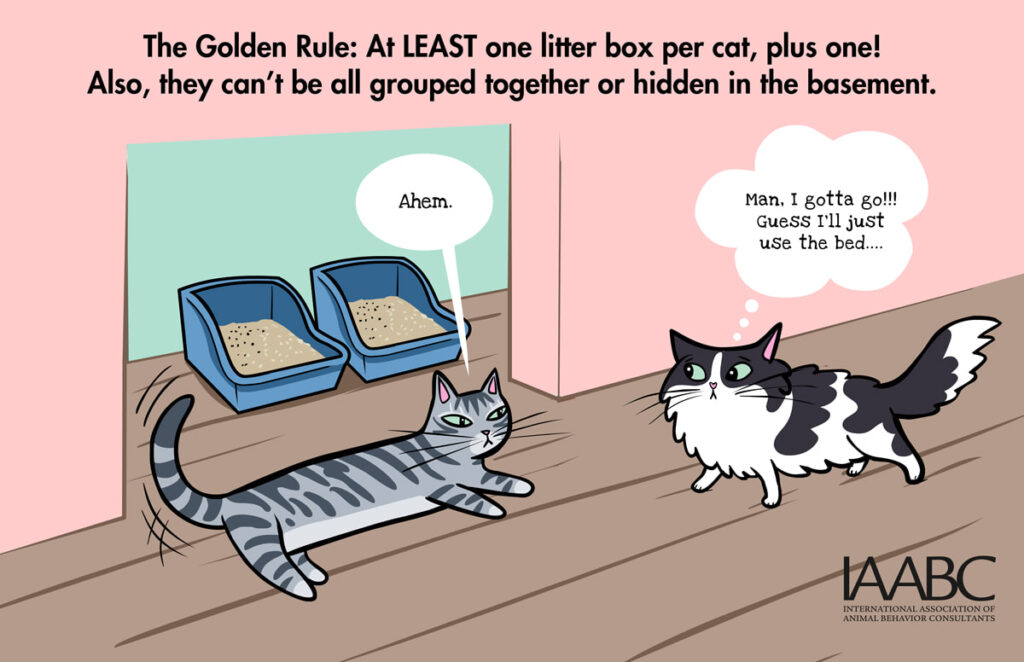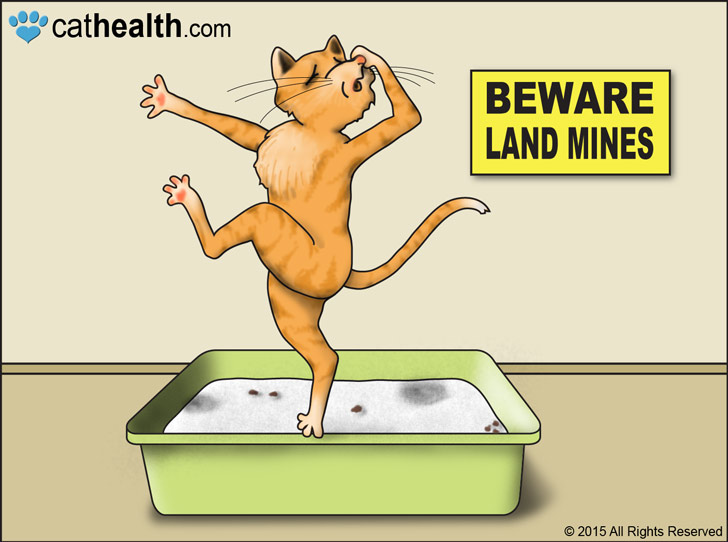
There are a lot of ways to prevent and solve litter box problems with cats. Unfortunately, these often easily solvable problems are the number one reason for surrendering a cat. You don’t have to give up your sweet friend! Here are some ways to keep your cat in the box.
First and foremost is a vet visit.
Most litter box issues are actually caused by medical issues,. such as a urinary tract infection, and will clear up on their own once the medical issue is taken care of. If you notice any box issues, it is a good idea to visit the vet right away in case this is the reason before not using the box becomes a habit. Sometimes older cats will pee outside the box edge because arthritis prevents them from squatting all the way.
Number of boxes
The minimum number of boxes to have are 1 per cat plus one extra. So if you have 1 cat your need 2 boxes, for 2 cats you need 3 boxes, etc. Many cats actually prefer to defecate and urinate in different places and a number of boxes can prevent anyone from guarding all the boxes.

Placement of boxes
Boxes should be in easily accessible spots. You and I would not like to have to go all the way to the basement or out in the cold garage for the bathroom, neither do our feline friends. Placement in a relatively quiet, non high traffic area is ideal. If you have more than one floor, one box per floor is a good idea. Spreading the boxes out in different areas will help your kitty to have access more easily. We all know how it is when we really need to go right away! For multiple cats (or another pet such as a dog), it is best to make sure the box is not in a place where kitty could get startled and feel trapped, like the back of a closet. Putting the boxes in places where one cat cannot guard them all helps with multiple cats too.
Type of box
There are a lot of varieties of boxes out on the market now. Ideally, you want a box that is at least 1 ½ times the length of your cat. Honestly, my favorite boxes are bins for mixing cement that you can get in the hardware store. They are large and deep enough to keep most of the litter in. Keep in mind, though, older cats may need a lower side as an entrance. Many cats do not like boxes with lids because they can feel like they are trapped. Complicated boxes and litter robots are not recommended because of how difficult they can be to clean well and some discourage use because of the noises they make. This is a place where experimentation with your cat’s preferences is a good plan. Just like us they are all individuals with different ideas of what they like.
Type of litter
Most cats do prefer unscented clay litter. The more sand-like the better. Scented litters overwhelm a cat’s sensitive nose and can discourage litter box use. Some cats will ingest litter made from corn or wheat, so it is a good idea to watch carefully the first time you use these types of litter. Again this is a place where some experimentation is a good idea to see what works best for both you and your cat.

Keeping it clean
Just like we don’t like to use a dirty port-a-potty, cats don’t like to use a dirty box. Scooping at least once a day and a once a week complete litter change and washing the box with just dish soap and water is best. Letting the box dry in the sun can help keep it smelling fresh. Using something stronger, such as bleach can bother your kitty’s sensitive nose.
For accidents
If your cat does miss the box, use an enzyme cleaning specific to cats to clean it up. Some cats will continue to use a spot that smells, so it is important to clean up any messes thoroughly. I like to use disposable pee pads under my boxes, just in case someone does miss, it is easy to clean up completely.


